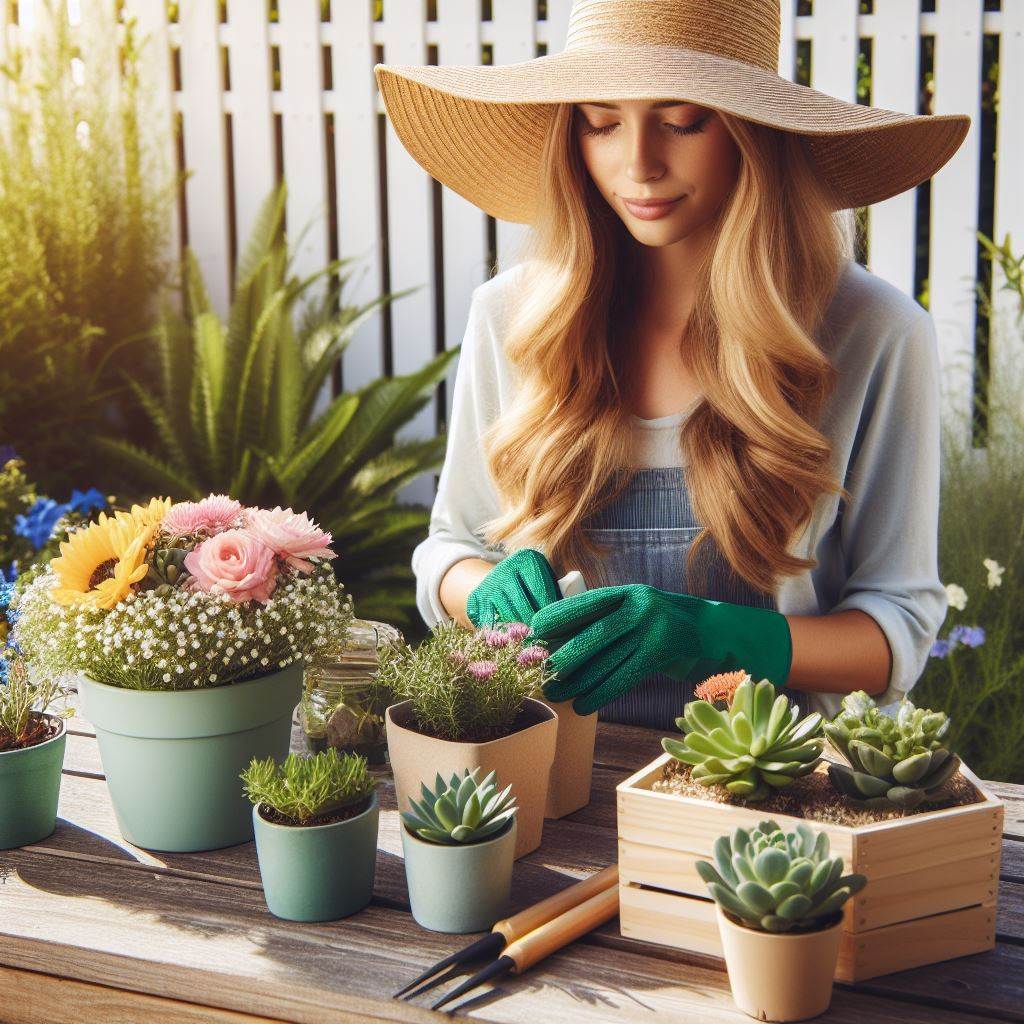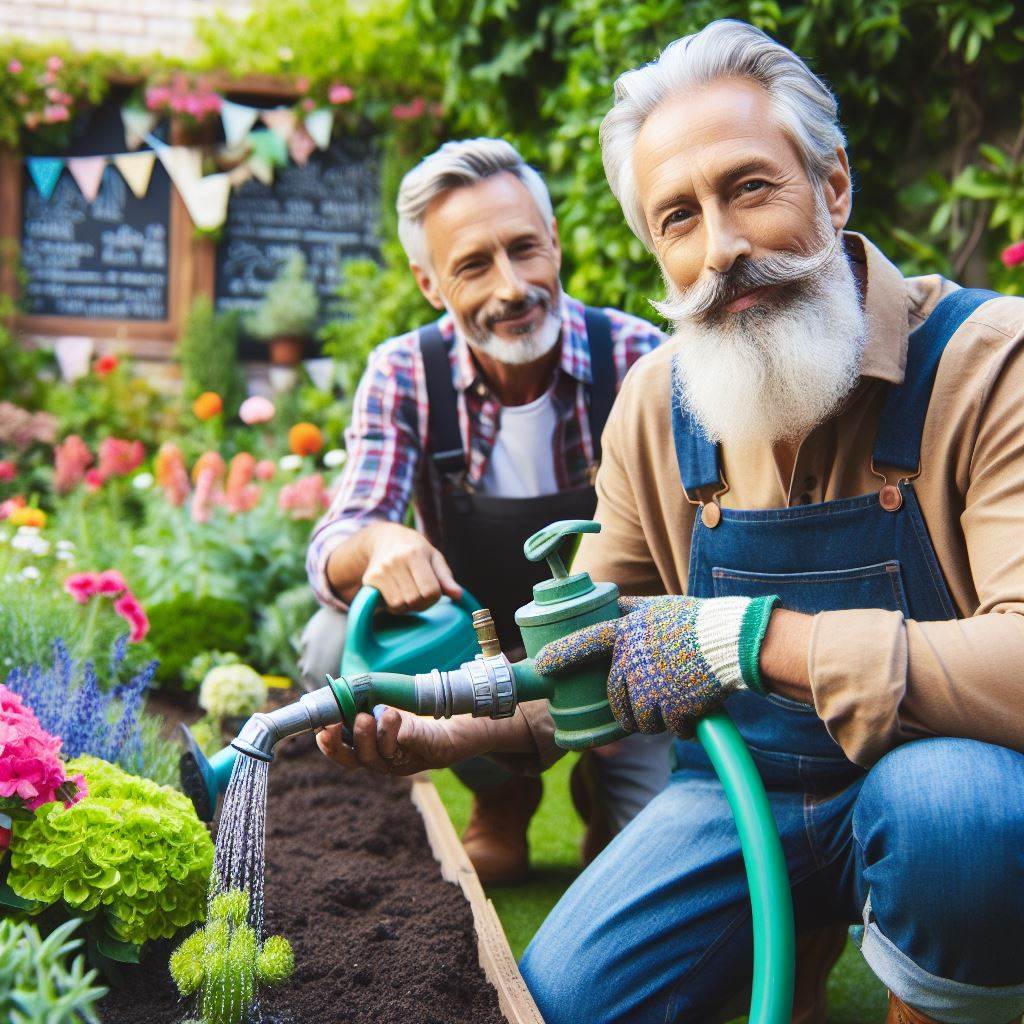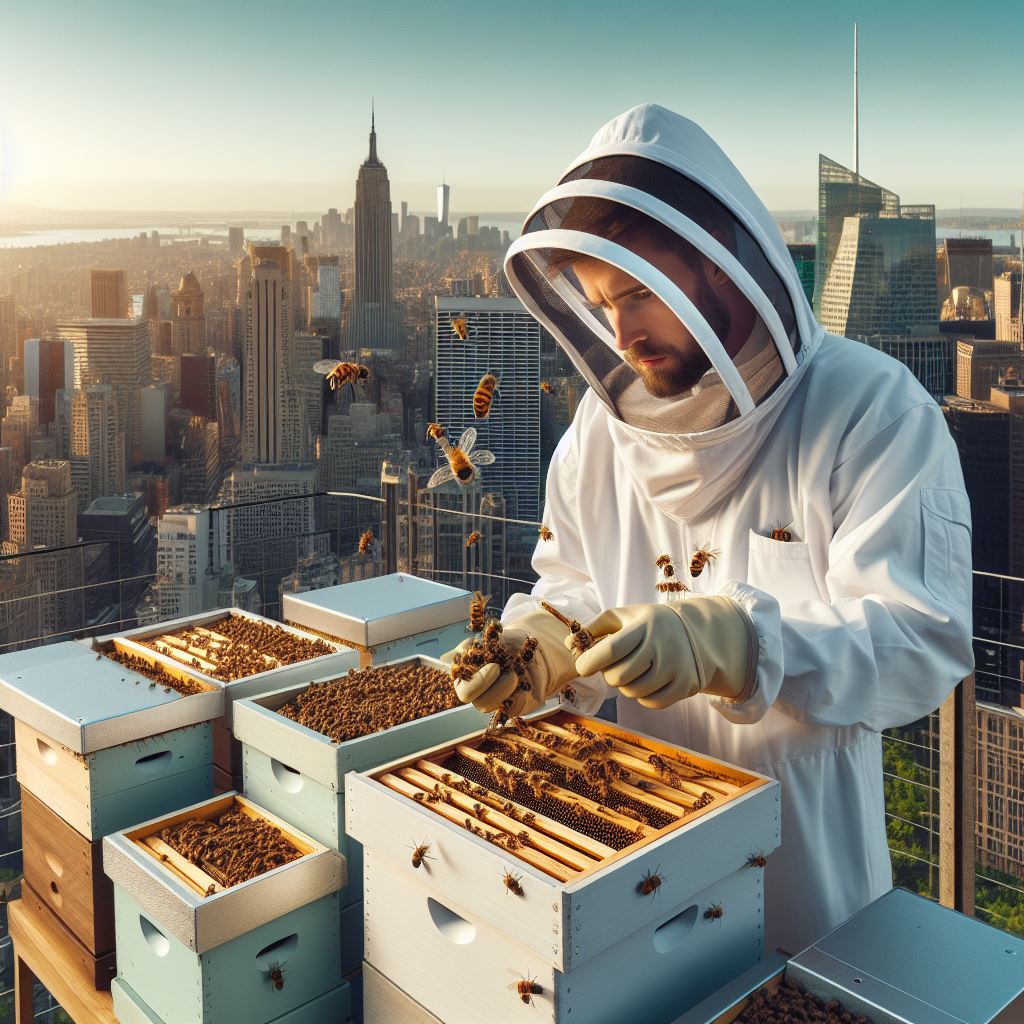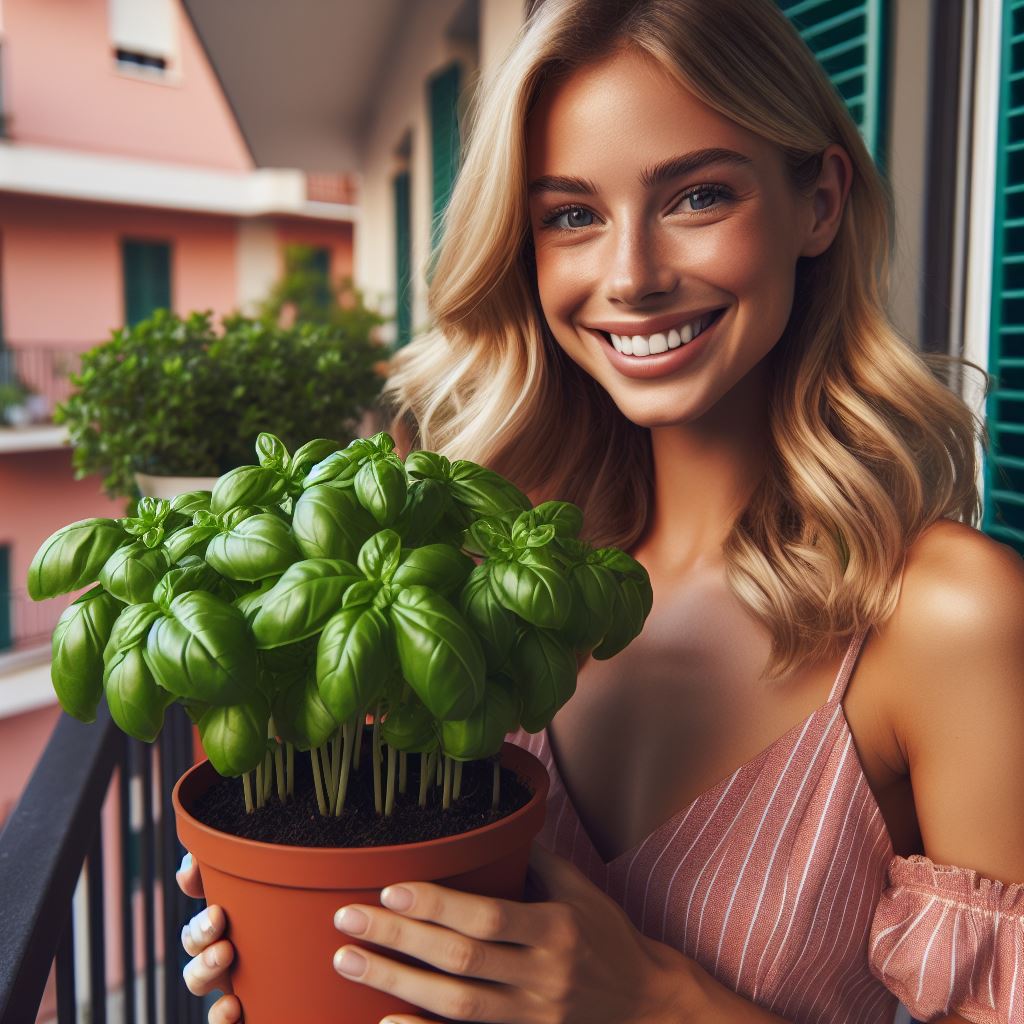Introduction
Growing edibles indoors
Growing your own food has become increasingly popular, and what better way to do it than indoors?
Indoor gardening, specifically growing edibles, has gained significant interest in recent years.
People are realizing the numerous benefits it offers, from having fresh produce year-round to controlling what goes into their food.
Benefits and growing interest in indoor gardening
One of the main advantages of indoor edibles is the ability to grow food regardless of the weather conditions outside.
Whether it’s scorching hot or freezing cold, you can still enjoy a thriving garden inside your home.
This allows you to have a consistent supply of fresh herbs, vegetables, and fruits throughout the year, regardless of the season.
Another benefit of indoor gardening is the ability to control and minimize the use of pesticides and chemicals.
By growing your own edibles, you have full control over what goes into your plants, ensuring that your food is free from harmful substances.
This is especially appealing for those who prioritize a healthy and sustainable lifestyle.
Indoor gardening is also an excellent option for those with limited outdoor space or living in urban areas.
With indoor edibles, you can make the most of small spaces such as apartments or condos and still enjoy the benefits of gardening.
It also provides an opportunity for those who may not have access to outdoor garden plots to engage in the joy and satisfaction of growing their own food.
The growing interest in indoor edibles reflects a desire for self-sufficiency, sustainability, and healthier lifestyles.
As more people recognize the advantages and convenience of growing their own food indoors, the popularity of indoor gardening continues to rise.
So, get ready to bring your garden inside and start enjoying the fresh and nutritious produce you’ve grown yourself.
Transform Your Agribusiness
Unlock your farm's potential with expert advice tailored to your needs. Get actionable steps that drive real results.
Get StartedHealth Benefits of Indoor Edibles
The nutritional advantages of growing and consuming homegrown food
Growing and consuming homegrown food offers various nutritional advantages that contribute to improved well-being.
- Freshness: With indoor gardening, you can enjoy fruits, vegetables, and herbs at their peak freshness.
- Nutrient-rich: Homegrown edibles are often more nutrient-dense compared to store-bought produce, which may have lost some nutritional value during transportation and storage.
- Increased vitamins and minerals: Indoor gardening allows you to consume edibles at their maximum nutritional value, ensuring you benefit from essential vitamins and minerals.
- Lesser pesticide exposure: By growing food indoors, you have control over pesticide usage, reducing your exposure to harmful chemicals.
- Organic cultivation: You can choose organic methods for indoor gardening, avoiding synthetic pesticides altogether.
- Enhanced flavor: Indoor-grown food tends to have a more intense flavor profile, enhancing the overall taste of your dishes.
- Microgreens: These tiny, nutrient-packed plants are easy to grow indoors and can provide a significant nutritional boost to your diet.
- Year-round availability: Indoor gardening enables you to have a continuous supply of fresh produce, regardless of the season.
- Medicinal herbs: Growing medicinal herbs indoors allows you to easily access their health-enhancing properties for teas, infusions, or natural remedies.
- Fewer food miles: By growing your own food indoors, you reduce the need for long-distance transportation, contributing to a smaller carbon footprint.
The control over pesticides and chemicals in indoor gardening
The control over pesticides and chemicals in indoor gardening has significant benefits for your health and the environment.
- Reduced chemical exposure: Indoor gardening minimizes your exposure to toxic pesticides commonly used in commercial farming.
- Allergen-free: By growing food indoors, you can avoid potential allergens present in outdoor crops, such as pollen.
- Safe for children and pets: Indoor gardens eliminate the risk of accidental exposure to pesticides, making them safer for families.
- Environmentally friendly: Indoor gardening helps protect our ecosystem by reducing chemical runoff into soil and water sources.
- Sustainability: By practicing indoor gardening, you contribute to sustainable and eco-friendly food production methods.
- Non-GMO options: Growing indoors allows you to choose and cultivate non-genetically modified varieties, providing you with more control over your food choices.
- Control over soil quality: Indoor gardening enables you to select and maintain optimal soil conditions, free from pollutants or contaminants.
- Pesticide-free home: Growing food indoors ensures that your living spaces remain free from potentially harmful chemical residues.
- Stress reduction: Indoor gardening can serve as a therapeutic activity, helping reduce stress levels and promote mental well-being.
- Educational value: Growing indoor edibles provides an opportunity to learn about plant cultivation, nutrition, and sustainable practices.
Incorporating indoor edibles into your lifestyle not only offers an array of health benefits but also empowers you to make conscious choices about the food you consume.
By embracing indoor gardening, you can enjoy fresh, nutritious, and safer produce while contributing to a sustainable future.
Read: Vertical Gardens: Maximize Your Space
Suitable Plants for Indoor Gardening
Indoor gardening has become a popular trend for those who want to grow their own food but lack outdoor space.
With the right plants, you can create an indoor garden that provides you with a variety of vegetables, herbs, and even fruits.
Here are some suitable plants for indoor gardening:
Vegetables
- Tomatoes: Cherry and grape tomatoes are great choices for indoor gardening. They require plenty of sunlight and a trellis for support.
- Salad greens: Lettuce, spinach, and arugula are fast-growing vegetables that can be easily grown indoors. They only require a few hours of sunlight each day.
- Peppers: Mini bell peppers or chili peppers can be successfully grown indoors. They need warmth and sunlight to thrive.
- Radishes: These root vegetables grow quickly and are perfect for indoor gardening. They require less sunlight compared to other vegetables.
- Carrots: Baby carrots are well-suited for indoor gardening. They can be grown in deep containers with well-draining soil.
Herbs
- Basil: This aromatic herb is easy to grow indoors and can be used in a variety of dishes. It needs at least six hours of sunlight per day.
- Mint: Mint is a hardy herb that can be grown in containers indoors. It prefers partial shade and regular watering.
- Rosemary: This woody herb thrives indoors with bright sunlight and well-drained soil. It adds a delightful flavor to roasted dishes.
- Thyme: Thyme is a low-maintenance herb that grows well in indoor gardens. It requires at least four hours of sunlight and well-drained soil.
- Chives: Chives are a versatile herb that can be added to many dishes. They need at least six hours of sunlight each day.
Fruits
- Strawberries: These small fruits can be grown in containers and hanging baskets. They require at least six hours of sunlight daily.
- Fig trees: Dwarf fig trees can be grown indoors if you have enough space. They need bright sunlight and occasional pruning.
- Citrus trees: Miniature citrus trees, such as lemon or lime, can be successfully grown indoors. They need lots of sunlight and regular watering.
- Blueberries: Blueberry plants can thrive in large containers indoors. They require acidic soil and plenty of sunlight.
- Pineapple: It is possible to grow pineapples indoors by planting the top of a pineapple fruit. They need bright light and warm temperatures.
When growing these plants indoors, it’s important to provide them with the right care and growth requirements.
They all need well-draining soil and regular watering.
Adding organic fertilizer can help promote healthy growth.
Remember to monitor for pests and diseases and take appropriate measures to prevent or treat them.
With a bit of planning and care, you can enjoy a bountiful harvest of fresh vegetables, herbs, and even fruits right from your indoor garden.
So, roll up your sleeves and get ready to embark on this exciting journey of growing your own food inside.
Read: Compact Composting: Urban Eco Tips
Setting Up the Indoor Garden
When it comes to growing edible plants indoors, setting up the indoor garden correctly is crucial.
Here are some key aspects to consider:
Choose a suitable location with adequate lighting
The first step in setting up your indoor garden is to find a suitable location.
Choose a spot that receives sufficient natural light, preferably near a window.
If natural light is limited, you can opt for grow lights to provide artificial light for your plants.
Different lighting options such as grow lights
Growing edible plants indoors often requires supplemental lighting.
Grow lights are an excellent option as they mimic the sun’s spectrum, allowing plants to photosynthesize effectively.
LED grow lights are energy-efficient and provide the right light spectrum for optimal plant growth.
Other options include fluorescent and incandescent lights, but they may not be as efficient in terms of energy consumption or light spectrum.
Showcase Your Farming Business
Publish your professional farming services profile on our blog for a one-time fee of $200 and reach a dedicated audience of farmers and agribusiness owners.
Publish Your ProfileChoosing the right grow lights will greatly enhance your indoor garden’s success.
The need for proper ventilation and temperature regulation
In addition to lighting, proper ventilation and temperature regulation are critical for a thriving indoor garden.
Plants need fresh air circulation to prevent the buildup of humidity and prevent the growth of mold and pests.
You can achieve good ventilation by opening windows or using fans to circulate the air.
Additionally, maintaining the appropriate temperature for your plants is crucial.
Most edible plants thrive in temperatures between 60-75°F (15-24°C).
Consider using a digital thermometer to monitor the temperature and make any necessary adjustments.
Avoid placing your indoor garden near drafts or areas with extreme temperature fluctuations.
To regulate the humidity, you can use a humidifier or mist the plants regularly.
Be cautious not to overdo it, as excessive moisture can lead to fungal diseases.
Basically, setting up an indoor garden for growing edible plants requires careful consideration of the location, lighting, ventilation, and temperature regulation.
By providing adequate lighting, choosing the right grow lights, maintaining proper ventilation, and regulating temperature, you can create an optimal environment for your indoor garden’s success.
Read: Rooftop Gardens: Sky-High Greenery
Choosing the Right Containers
Importance of selecting appropriate containers for indoor gardening
When engaging in indoor gardening, selecting the appropriate containers is of utmost importance.
Here’s why:
- Drainage: Proper drainage is crucial for the health of your indoor plants. Look for containers with drainage holes to prevent waterlogging.
- Size: Consider the size of the container in relation to the root system of the plants you wish to grow. Ensure there is enough space for growth.
- Material: There are various container materials available, each with its own advantages. Choose containers made of plastic, ceramic, or terracotta based on your needs.
- Plastic Containers: These are lightweight, inexpensive, and easy to clean. They also retain moisture and are suitable for plants requiring high humidity.
- Ceramic Containers: These provide excellent insulation and stability. However, they may be more expensive and heavier than other options.
- Terracotta Containers: Terracotta pots are porous, allowing for better airflow to the plant’s roots. They are ideal for plants that prefer drier soil.
- Self-Watering Containers: These containers have a reservoir at the base that supplies water for extended periods, reducing the need for constant watering.
- Hanging Baskets: Perfect for trailing plants or those with vines, hanging baskets save floor space and add visual interest to your indoor garden.
- Vertical Wall Planters: Utilize empty wall space by installing vertical wall planters. These are great for growing herbs or small leafy greens indoors.
- Window Boxes: If you have ample sunlight coming in through windows, window boxes are a convenient option for growing edible plants indoors.
Additional Factors to Consider
- Accessibility: Choose containers that are easy to access, making it convenient to monitor the plants and perform routine maintenance tasks like watering or pruning.
- Aesthetic Appeal: Consider the overall look and feel of your indoor space. Select containers that complement your decor and create a visually pleasing indoor garden.
- Mobility: If you plan to move your plants around frequently, opt for containers with built-in wheels or lightweight options for easy transportation.
Generally, choosing the right containers for your indoor garden is crucial for the success of your edible plants.
Consider factors such as drainage, size, material, and additional features like self-watering mechanisms.
By selecting the appropriate containers, you can create a thriving and visually appealing indoor garden.
Happy gardening!
Soil and Fertilization
Different types of soil mixes suitable for indoor gardening
- Potting soil: A versatile mix containing peat moss, perlite, and vermiculite for good drainage.
- Seed starting mix: Light and fine-textured mix to promote germination and young plant development.
- Cactus soil mix: Sandy mix with added perlite or grit for good drainage and aeration.
Importance of fertilization for indoor plants
- Provides essential nutrients: Fertilizers supply plants with necessary nutrients like nitrogen, phosphorus, and potassium.
- Enhances growth and productivity: Proper fertilization boosts plant growth, flowering, and fruit production.
- Corrects nutrient deficiencies: Fertilization helps alleviate deficiencies and maintains plant health and vigor.
Organic options for fertilization in indoor gardening
- Compost: Nutrient-rich organic matter made from decomposed plant material. Can be mixed into soil or used as top dressing.
- Worm castings: Vermicompost created by earthworms, containing beneficial microbes and essential nutrients.
- Fish emulsion: A concentrated liquid fertilizer made from fish byproducts, providing a balanced range of nutrients.
- Seaweed extract: Derived from seaweed, this organic fertilizer enhances plant growth and offers trace elements.
Tips for successful fertilization in indoor gardening
- Follow package instructions: Use fertilizers according to the recommended dosage and frequency.
- Don’t over-fertilize: Excessive fertilization can lead to nutrient imbalances and plant damage.
- Water plants before fertilizing: Moist soil enables better nutrient uptake and avoids root burn.
- Rotate fertilizers: Alternate between organic options to provide a diverse range of nutrients.
- Monitor plant response: Observe how plants react to fertilization to make necessary adjustments.
Common mistakes to avoid with indoor gardening fertilization
- Neglecting soil testing: Regularly test soil to understand nutrient levels and avoid excessive fertilization.
- Using the wrong fertilizer: Choose fertilizers suitable for indoor gardening and specific plant needs.
- Applying fertilizers at the wrong time: Fertilize during active growing periods for optimum nutrient absorption.
- Ignoring signs of over/under-fertilization: Monitor plant health and adjust fertilization practices accordingly.
- Fertilizing unhealthy plants: Focus on resolving plant health issues before applying fertilizers.
Essential nutrients for indoor plants
- Nitrogen (N): Promotes leaf growth and overall plant development.
- Phosphorus (P): Supports root development, flowering, and fruit production.
- Potassium (K): Enhances plant vigor, disease resistance, and quality of fruits and flowers.
- Calcium (Ca): Necessary for cell wall strength and preventing common plant disorders.
- Magnesium (Mg): Vital for chlorophyll production and photosynthesis.
Best practices for soil maintenance and fertilization in indoor gardening
- Regularly check soil moisture: Ensure proper watering and avoid waterlogged or dry conditions.
- Maintain good drainage: Use well-draining pots and avoid heavy, compacted soil.
- Replenish nutrients: Apply organic fertilizers or compost regularly to maintain soil fertility.
- Remove debris and dead plant material: Cleanliness prevents pests and diseases from spreading.
- Keep a gardening journal: Record fertilization schedules, plant growth, and observations for future reference.
Remember, providing the right soil mix and organic fertilization will help your indoor edibles thrive and yield delicious results. Happy gardening!
Read: Urban Farming: Small Plot, Big Yield
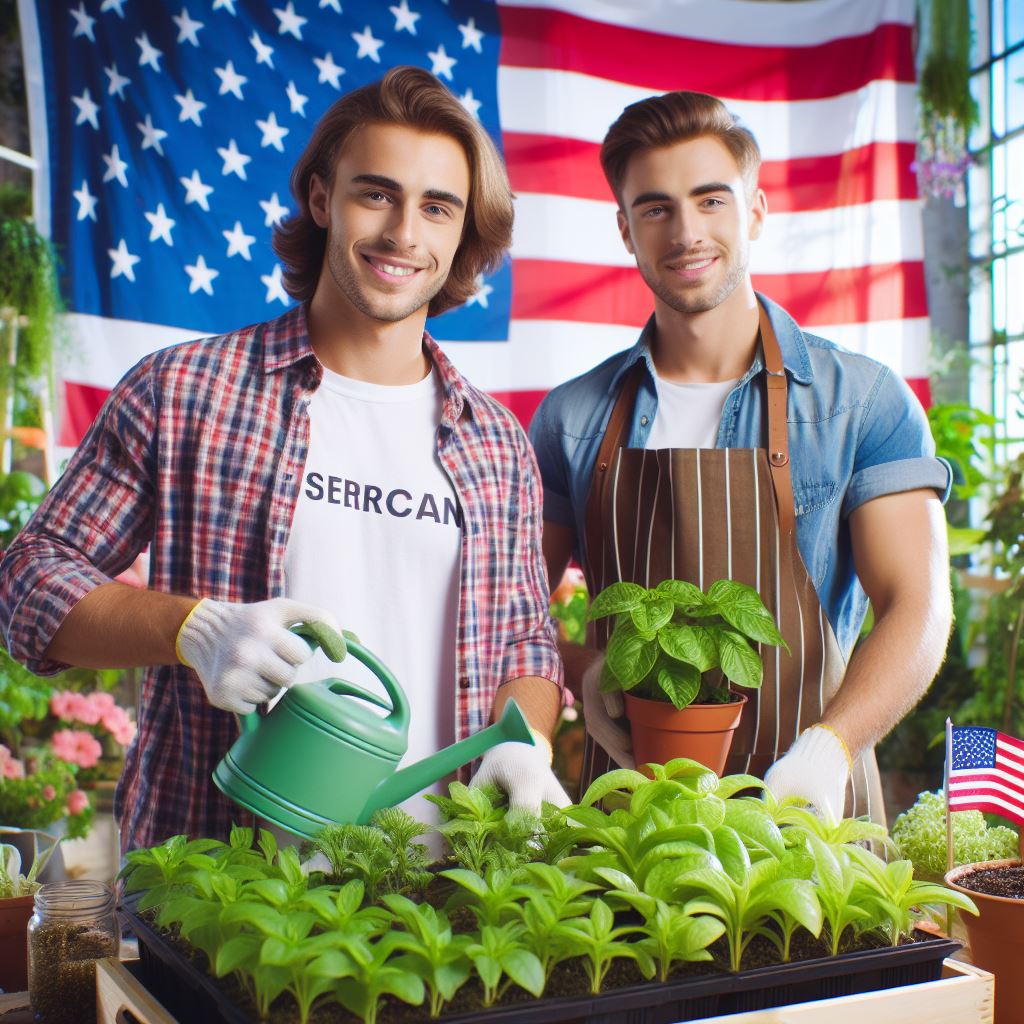
Watering and Maintenance
Tips for watering indoor plants effectively
Watering indoor plants effectively is crucial for their growth and survival.
Here are some tips:
- Understand your plant’s watering needs: Different plants have different water requirements. Research the specific needs of your indoor plants to avoid over or under-watering.
- Use the right watering technique: Pour water evenly around the base of the plant, allowing it to reach the roots. Avoid watering from the top as it may lead to leaf rot or fungal diseases.
- Monitor soil moisture: Stick your finger about an inch deep into the soil to check its moisture level. Water only when the top inch feels dry.
- Use the right watering container: Choose a watering can or a narrow-spouted pitcher to ensure a controlled flow of water without splashing or causing damage to leaves.
- Consider using a self-watering system: For busy individuals or frequent travelers, self-watering systems can be a convenient option. These systems provide a steady water supply based on plant needs.
- Avoid over-watering: Over-watering can lead to root rot and other problems. Make sure to drain any excess water from saucers or trays to prevent waterlogging.
Common maintenance tasks like pruning and pest control
Maintenance tasks like pruning and pest control are essential for healthy indoor plants.
Here are some common practices:
- Pruning: Regularly trim your indoor plants to promote bushier growth, remove dead or damaged leaves, and maintain their overall shape. Use sanitized pruning shears to avoid spreading diseases.
- Fertilizing: Indoor plants often require fertilization to replenish essential nutrients. Use a balanced fertilizer specifically formulated for indoor plants and follow the manufacturer’s instructions.
- Dusting and cleaning: Dust can accumulate on indoor plant leaves, blocking sunlight absorption. Gently wipe leaves with a damp cloth or use a soft brush to keep them clean and allow optimal photosynthesis.
- Pest control: Indoor plants can suffer from pests like aphids, mealybugs, or spider mites. Inspect plants regularly and take action at the first sign of infestation. Use organic insecticides or natural remedies to control pests.
- Rotating plants: Rotating your plants periodically helps ensure equal light exposure on all sides, preventing leaning or uneven growth. This also helps avoid the development of lopsided or unattractive plants.
- Monitoring temperature and humidity: Indoor plants thrive in specific temperature and humidity ranges. Ensure your plants are not exposed to extreme cold or hot temperatures. Also, maintain appropriate humidity levels to prevent drying or excessive moisture.
- Repotting: Indoor plants may require repotting when they outgrow their current containers. Select a slightly larger pot and use well-draining soil to prevent waterlogged roots.
Essentially, watering indoor plants effectively and performing regular maintenance tasks are crucial for their health and vitality.
Understanding their specific needs, adopting proper techniques, and addressing common issues will help you cultivate a thriving indoor edible garden.
Harvesting and Utilizing Indoor Edibles
How to know when indoor plants are ready for harvest
Growing food indoors has gained popularity, and once your plants are ready for harvest, the satisfaction is immense.
Harvesting at the right time ensures optimal taste and nutrition. Here’s how to know when indoor plants are ready for harvest:
- Check for visual cues: Observe the plant’s overall appearance. Are the leaves vibrant and healthy? Are fruits or vegetables fully developed? A vibrant appearance indicates readiness.
- Assess the color: Different plants display distinct color changes when ripe. For instance, tomatoes turn fully red, while peppers shift from green to their specific hue.
- Give it a gentle squeeze: Gently squeeze the produce to check for firmness. Fruits and vegetables should feel firm but not overly hard or soft.
- Smell the aroma: Certain edibles develop a strong fragrance when they are ripe. This is especially true for herbs like basil, mint, and rosemary.
- Taste test: Enjoying a small sample can help determine if the produce is ready. A burst of flavor and juiciness indicates the perfect time for harvest.
Ideas and recipes for using homegrown edibles
Now that you have harvested your indoor edibles, let’s explore some exciting ideas and recipes to utilize your homegrown treasures:
- Fresh salads and salsas: Mix your freshly harvested lettuce, spinach, kale, and herbs to create vibrant salads. Combine tomatoes, onions, and peppers for a delicious homemade salsa.
- Flavorful herb-infused oils and vinegars: Combine your herbs with high-quality oils or vinegars to infuse them with rich flavors. These can be used in dressings, marinades, or even for drizzling over dishes.
- Herbal teas and refreshing beverages: Dry your harvested herbs like chamomile, lavender, or mint to make flavorful herbal teas. You can also add them to homemade lemonade or iced tea for a refreshing twist.
- Homemade pesto and sauces: Blend your homegrown basil, garlic, and pine nuts to create a heavenly pesto sauce. Use it in pasta dishes, as a spread, or even as a marinade for grilled vegetables.
- Fresh herb butter: Mix finely chopped herbs into softened butter for a flavorful spread. Use it on bread, roasted vegetables, or grilled meats for an extra burst of taste.
Additional ideas
- Infused ice cubes and cocktails: Freeze your harvested berries, fruits, or herbs in ice cube trays. Add these to your favorite cocktails or sparkling water for a burst of flavor and a decorative touch.
- Oven-roasted vegetables: Toss your harvested root vegetables like carrots, beets, and potatoes with olive oil, herbs, and spices. Roast them in the oven for a delicious and nutritious side dish.
- Homemade pickles and preserves: Preserve your harvested cucumbers, chili peppers, or green beans by pickling them in vinegar, salt, and spices. Enjoy them throughout the year as a tangy and crunchy snack.
- Fresh herb marinades and rubs: Combine your homegrown herbs with olive oil, garlic, and spices to create flavorful marinades for meats and vegetables. Let them infuse before grilling or roasting.
- Fruit smoothies and desserts: Blend your harvested fruits with yogurt or milk to create refreshing smoothies. You can also use them in pies, cobblers, or fruit salads for a sweet treat.
With these ideas and recipes, you can make the most of your indoor edibles, enhancing your meals with the satisfaction of homegrown produce. Happy harvesting and happy cooking!
Troubleshooting Common Indoor Gardening Issues
Indoor gardening is a great way to grow your own food, but it can come with its own set of challenges.
In this section, we will discuss some common issues that indoor gardeners may face and provide solutions to overcome them.
Whether it’s dealing with pests, diseases, or nutrient deficiencies, we’ve got you covered!
Common pests you may encounter
Pests can be a pesky problem when it comes to indoor gardening.
Here are some common pests you may encounter and how to deal with them:
- Aphids: These small, green insects can suck the life out of your plants. To get rid of them, try spraying a mixture of water and dish soap on the affected areas.
- Spider mites: These tiny pests can wreak havoc on your plants, causing yellowing and speckled leaves. Use a spray bottle filled with water and a few drops of neem oil to combat them.
- Fungus gnats: These annoying flies lay their eggs in the soil, and their larvae can damage plant roots. Apply a layer of sand on top of the soil to prevent them from breeding.
Some common diseases and their solutions
Diseases can also be detrimental to the health of your indoor plants.
Here are some common diseases and their solutions:
- Powdery mildew: This fungal disease results in a white, powdery coating on leaves. Remove affected leaves and improve ventilation to reduce humidity levels.
- Root rot: Overwatering can lead to root rot, causing plants to wilt and eventually die. Ensure proper drainage and let the soil dry out between waterings.
- Leaf spot: Brown or black spots on leaves indicate a leaf spot disease. Avoid overhead watering and remove infected leaves to prevent further spread.
Common nutrient deficiencies and how to address them
Nutrient deficiencies can hamper the growth and development of your indoor plants.
Here are some common deficiencies and how to address them:
Showcase Your Farming Business
Publish your professional farming services profile on our blog for a one-time fee of $200 and reach a dedicated audience of farmers and agribusiness owners.
Publish Your Profile- Nitrogen deficiency: Yellowing leaves and stunted growth are signs of nitrogen deficiency. Add organic matter or apply a nitrogen-rich fertilizer to boost growth.
- Phosphorus deficiency: Purple or reddish leaves signify a lack of phosphorus. Use a fertilizer with high phosphorus content to promote healthy root development and flowering.
- Potassium deficiency: Yellowing or browning leaf edges may indicate a potassium deficiency. Apply a potassium-rich fertilizer to improve plant vigor.
General tips to maintain a healthy indoor garden
Remember, prevention is always better than cure. Here are some general tips to maintain a healthy indoor garden:
- Provide adequate lighting: Indoor plants need sufficient light to grow. Invest in grow lights or place your plants near a sunny window.
- Maintain proper humidity levels: Some plants thrive in high humidity, while others prefer drier conditions. Research your plant’s specific needs and adjust humidity accordingly.
- Avoid overwatering: Most indoor plants prefer slightly moist but not soggy soil. Stick your finger into the soil to check for moisture levels before watering.
- Practice good hygiene: Regularly clean your gardening tools and containers to prevent the spread of diseases and pests.
- Monitor plant health: Keep an eye on your plants for any changes in growth, color, or appearance. Catching problems early can prevent further damage.
With these troubleshooting tips, you can overcome common indoor gardening issues and enjoy the satisfaction of growing your own food inside! Happy gardening!
Conclusion
Overall, growing indoor edibles offers several benefits and can be successfully achieved by following a few steps.
First, choose the right location with adequate light and temperature for the plants.
Next, carefully select the appropriate containers and soil for each edible.
Regular watering, fertilizing, and pruning are crucial for their growth.
Moreover, using organic methods and pesticides will ensure healthy and chemical-free produce.
Finally, harvesting the fruits or vegetables at the right time will reward you with delicious and nutritious homegrown food.
Starting your own indoor garden is a delightful and rewarding experience that allows you to enjoy fresh, flavorful food all year-round.
Not only does it provide a sustainable and self-reliant food source, but it also promotes a sense of accomplishment and connection to nature.
So why not embark on this journey and enjoy the satisfaction of growing your own indoor edibles?
Begin your garden today and savor the joy of homegrown goodness!

